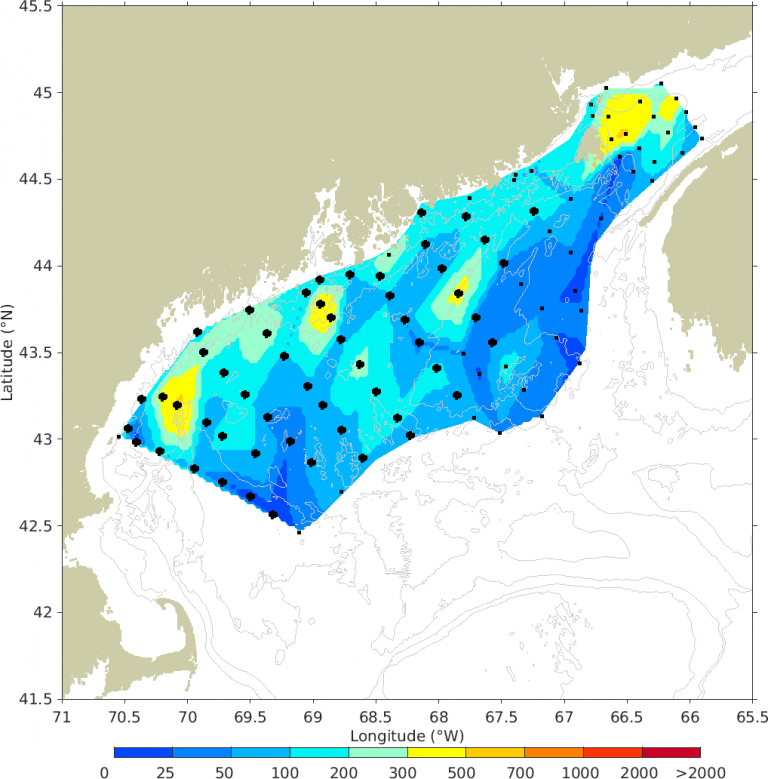Gulf of Maine Forecast for 2021: Low Bloom
Researchers with NOAA’s National Centers for Coastal Ocean Science (NCCOS) are expecting a low, gulf-wide red tide for the Gulf of Maine this spring and summer, continuing the pattern of smaller blooms observed in the region over the last few years.
Gulf of Maine red tide, caused by the algae Alexandrium catenella, produces a toxin that can accumulate in shellfish, which can result in serious or even fatal illness in people who eat contaminated shellfish. The magnitude and severity of Alexandrium blooms, and the subsequent need for shellfish harvesting closures to protect human health, vary considerably from year to year and between decades. Shellfish toxicity was severe and widespread from 1978 to 1988 and again from 2003 to 2009, but has been lower since then. The causes of the decadal variations are the subject of ongoing research.
In October 2020 aboard NOAA Ship Henry B. Bigelow, researchers from NCCOS and the Woods Hole Oceanographic Institution collected the data needed to map the presence of red tide cysts in the gulf (Figure 1), and to predict the size of the red tide in 2021. The scientists and crew observed strict COVID-19 anti-viral transmission protocols to complete the cruise safely and successfully.

In October 2020 aboard NOAA Ship Henry B. Bigelow, researchers from NCCOS and the Woods Hole Oceanographic Institution collected the data needed to map the presence of red tide cysts in the gulf (Figure 1), and to predict the size of the red tide in 2021. The scientists and crew observed strict COVID-19 anti-viral transmission protocols to complete the cruise safely and successfully.
The cyst abundance for Fall 2020 ranked 16 out of 17 years of cyst sampling, representing the second lowest abundance on record. NOAA will provide coastal stakeholders with weekly updates of modeled bloom extent, trajectory, and intensity throughout the spring and summer, and guidance to states monitoring harmful algae and shellfish toxicity along the coast.
2021 marks the fourteenth year that NOAA and its partners have issued the seasonal forecast, which enables proactive responses to protect coastal economies, making the region more resilient to red tide outbreaks.
An interactive forecast simulation can be found HERE.
ARCHIVED FORECASTS
Forecasts from prior years can be accessed below:
- Gulf of Maine Red Tide Forecast Predicts Low to Moderate Bloom for 2020
- Small Bloom Predicted for Gulf of Maine Red Tide in 2019 (video)
- Small Bloom Predicted for Gulf of Maine Red Tide in 2017
- Gulf of Maine Red Tide Forecast Predicts Small Bloom for 2016
- Gulf of Maine Red Tide Forecast Suggests Moderate Bloom for 2015
